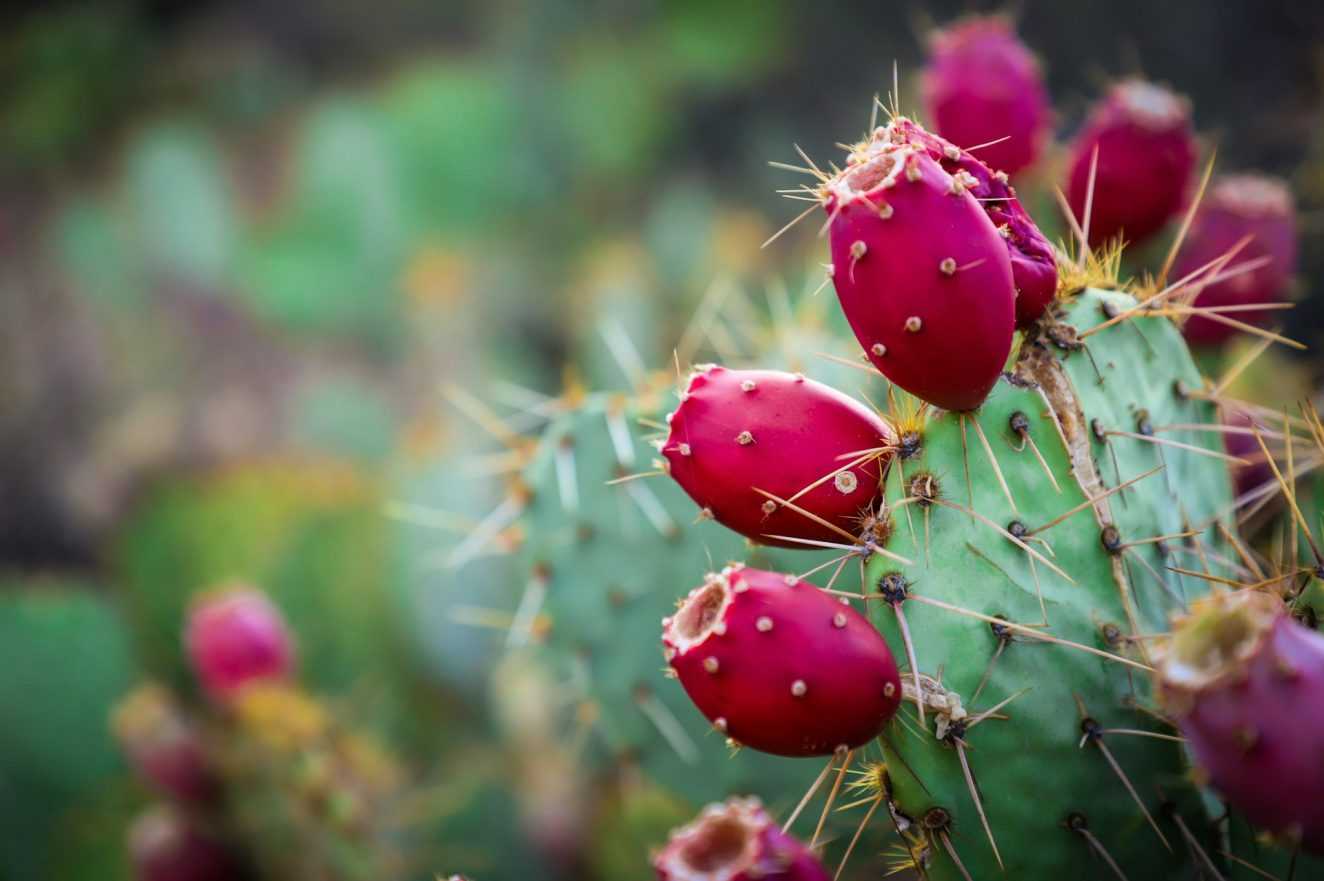When you think of cacti, your mind might drift to their intimidating spines or their iconic presence in desert landscapes. But did you know that several types of cactus are not just edible but delicious and nutritious too? From sweet fruits to savory paddles, these prickly plants have been a staple in various cuisines for centuries. Let’s dive into 13 types of cacti that you can add to your culinary repertoire.

1. Prickly Pear Cactus
The prickly pear cactus, or Opuntia, is probably the most well-known edible cactus. Found throughout the Americas, it boasts wide, flat paddles and vibrant red fruit. These cacti are a staple in Mexican and Southwestern cuisine. The fruit, known as “tuna,” has a flavor reminiscent of watermelon and bubblegum. It can be eaten fresh or transformed into jams, jellies, candies, and syrups. The paddles, called “nopales,” are versatile and nutritious, often used in salads, tacos, and salsas.
2. Dragon Fruit
Dragon fruit, or pitaya, originates from Central and South America. It’s easily recognizable by its pink or yellow scales and speckled white or red flesh. The fruit comes from the Hylocereus cactus and is a popular ingredient in smoothies, salads, and desserts. The flesh is sweet, similar to kiwi or pear, and packed with fiber, vitamin C, and antioxidants.
3. Peruvian Apple Cactus
The Peruvian apple cactus produces thornless, purple or yellow fruits with a white, fleshy interior. These fruits have a mild flavor, often compared to sugarcane. They are great eaten fresh or added to smoothies and salads. This cactus also serves as a stunning ornamental plant, growing up to thirty feet tall.
4. Queen of the Night Cactus
The Queen of the Night cactus is famous for its large, fragrant, night-blooming flowers. It produces purple to red edible fruits with a white, fleshy center, similar to dragon fruit. Native to Southern Mexico and South America, this cactus’s fruit is mildly sweet and can be enjoyed raw or added to various dishes.
5. Barrel Cactus
The barrel cactus, with its pineapple-like fruit, is a desert survivalist’s delight. Its yellow fruit has a tart, lemony flavor and can be eaten raw, roasted, or boiled. The seeds, bland when raw, become nutty when toasted. This cactus is not only a food source but also provides materials for tools and shelter.
6. Cholla Cactus
Cholla cactus offers edible fruit, buds, and stalks. The buds are rich in calcium and must be boiled to remove oxalic acid before consumption. Once prepared, they have a taste similar to strawberries with a vegetal note. These buds can be added to salads and salsas, or the fruit can be reduced to syrup for cocktails.

7. Saguaro Cactus
The saguaro cactus is an iconic symbol of the American Southwest. Its red fruit can be eaten raw or cooked into syrup or jelly, and the seeds can be ground into flour. Harvesting saguaro fruit is a tradition among the Tohono O’odham people, using long poles to reach the fruits atop the tall cactus.
8. Hedgehog Cactus
Echinocereus, or hedgehog cactus, produces inch-long red fruits with a sweet, strawberry-like flavor. The fruit can be eaten raw, dried, or made into jam. The inner stem’s juice also has soothing medicinal properties. However, this cactus is protected in some states, so check local regulations before foraging.
9. Blue Myrtle Cactus
The blue myrtle cactus grows from a star-shaped stalk to a towering cactus tree. Its fruit is similar to a grape or blueberry and has a plum-like taste. Known as garambullos in Mexico, these fruits are used in jams, ice creams, and drinks. This cactus is also a popular ornamental plant due to its striking appearance.
10. Moon Cactus
The moon cactus is actually two cacti grafted together: the colorful top is a mutant gymnocalycium mihanovichii, while the bottom is usually a hylocereus. The fruit of the moon cactus is round, red, and filled with white pulp and black seeds, similar to dragon fruit. These fruits split open when ripe and can be enjoyed fresh.
11. Beehive Cactus
Beehive cactus, or spinystar cactus, grows in small clusters and produces bright, star-like flowers. The berry-like fruits are sweet and juicy, tasting similar to kiwi. This cactus is appreciated for its appearance and vivid flowers, though it has also served as a food source historically.
12. Escontria Cactus
Escontria cactus, or choitilla, produces scaly, purple fruit with red pulp. The fruit can be eaten raw or juiced, tasting sweet like gooseberries. This cactus has agricultural uses and potential medicinal properties, with researchers exploring its anticancer potential. It’s a versatile plant for both food and medicine.
13. Barbados Gooseberry Cactus
The Barbados gooseberry cactus is a climbing, leafy plant with fragrant flowers and tart, orange berries. Its fleshy leaves are edible and nutritious, often stewed into dishes in Brazil. Known for its resilience and historical significance, this cactus continues to be celebrated in regional festivals.

Incorporating cactus into your diet might seem unconventional, but these versatile and nutritious plants offer a unique culinary experience. From sweet fruits to savory paddles, there’s a world of edible cacti waiting to be explored. So next time you’re looking for something new and exciting to try, consider adding one of these fascinating cacti to your menu!





